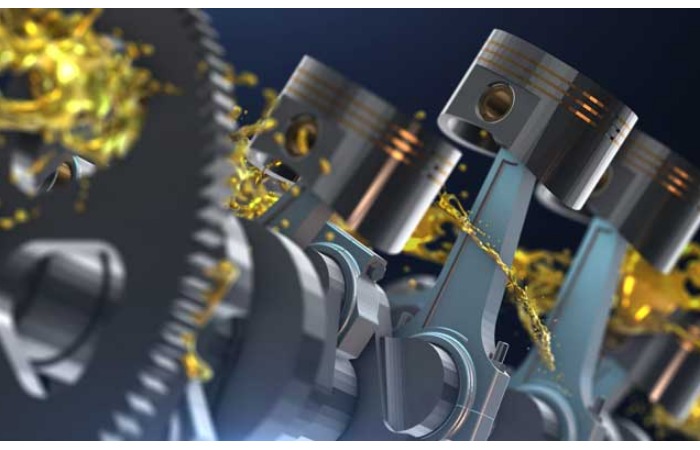
Reducing inventory of lubricants
Most of the plants carry a variety of lubricants inventory having different grades, types, and names. Consolidation of this inventory can provide several benefits that include reducing inventory quantities, and costs, minimisingthe risk of cross-contamination and misapplication, and simplifying storage and handling.
The consolidation requires the support and knowledge of a qualified lubricant advisor with application knowledge. If done without proper technical knowledge may result in machine failure, which will eliminate the savings and benefits gained from consolidation.
Lubricant labeling and terminology
Many of us are confused looking at the lubricants labels that appear similar without any inkling of how they differ, moreover there is confusion regarding the use of lubricants for certain machines and the importance of the application. Over time, many plant facilities hold a wide variety of lubricants without knowing how they differ and for which application they were used. This is compounded by different brands of lubricants using different labelling norms and terminology.
Organisation and consolidation
To consolidate and organise the inventory, the first and foremost step is to conduct a lube or lubricant survey. The lubricant survey consists of listing and documenting every single piece of equipment that requires lubricant, the parts that are being lubricated, and the lubricants being used presently. It should also include the required lubricant specification as recommended by the original equipment manufacturer. The listing should be as specific as possible to include all the information like viscosity/ISO grade, viscosity index, characteristics required like antiwear, rust and oxidation, extreme pressure, etc. The consumption of the lubricant annually is important for carrying out the inventor’s control.
The next step is to check the complete inventory of all the lubricants used. If possible, all the lubricants should be stored in one location called a lube room which should be preferably indoors. This practice of storage will reduce the risk of contamination and avoid over-ordering of the same grade more than required for the specific period. The lubricants should be labeled with the receiving date, which is important to not only check the shelf life but also ensure the first-in-first-out (FIFO) is carried out. However, this will also require a storage arrangement for easy retrieval.
For checking the technical feasibility of consolidation, the technical/product data sheetsfor every lubricant should be made available. This will help to organise them by their respective specification – R&O, AW,EP, and ISO grade.
The consolidation should begin with the elimination of multiple brands of lubricant having the same specifications and application. For example, there may be multiple brands of hydraulic oils of AW 46 grade or gear oils of EP 320 grades. The technical data sheet should be reviewed very carefully to check for any performance differences and their effect on the application. The same EP 320 may be formulated with a mineral base oil and the other with a polyglycol-based synthetic base oil. With due consideration to the machine manufacturer’s recommendation sometimes a higher performance lubricant can give higher benefits and the long-term savings will outweigh the initial cost of the lubricant. This may be due to a longer drain period and fewer machine repairs and rebuild.
If any changes are made in the lubricant of the machine, it is necessary to carry out the compatibility study ofthe existing grade. If they are not compatible then the existing fluid should be completely drained out and flushedprior to the usage of the new lubricant.
Sometimes the consolidation of ISO grades will be possible as well. For example, there may be hydraulic systems using ISO VG 32 and ISO VG 46. There could be a possibility of consolidating one grade (32 or 46) depending upon the pump and specification of the hydraulic system. The equipment manufacturers’ assistance should be consulted if needed. Another example is gear oil, if EP 320 and EP 460 are being used there is the possibility of combining into one grade depending upon the load, speed, and the temperature of the operations.
Colourcoding of the lubricants
After the lubricants consolidation, an important step is the adoption of the colour-coding system to ensure that the correct lubricant is used in the correct machine. Marking the same colour on the lubrication point on the machine and the product including the dispensing containers will ensure that the correct lubricants are being used.
The colour typically coincides with the type of lubricant viz hydraulic gear, engine, compressor, etc. The colour code mark also contains information such as product name, viscosity, and application. The colour coding and the shape guide should be placed where it is readily accessible and inprominent areas including where the lubricants inventory is stored.
Consolidation of lubricants in any organisation would provide many benefits that include savings in cost, minimisingthe risk of cross-contamination, and mainly prevention of expensive machine failures. The consolidation should be carried along with a qualified or experience lubricant professional. The best practices on lubricant consolidation will bring immense benefits to the organisation.
Global Technical Services has over two decades of experience in total lubricant management for the industries andlubricant consolidation is part of the service provided. The colour-coded dispensing systems and containers are also manufactured by the company and are widely used in the industries.
For further information:
Global Technical Services, Mumbai
Email: glad@gtsindia.com or ak@gtslabs.com
Web: www.gtsindia.com


 +91-22-24193000
+91-22-24193000 Subscriber@ASAPPinfoGlobal.com
Subscriber@ASAPPinfoGlobal.com